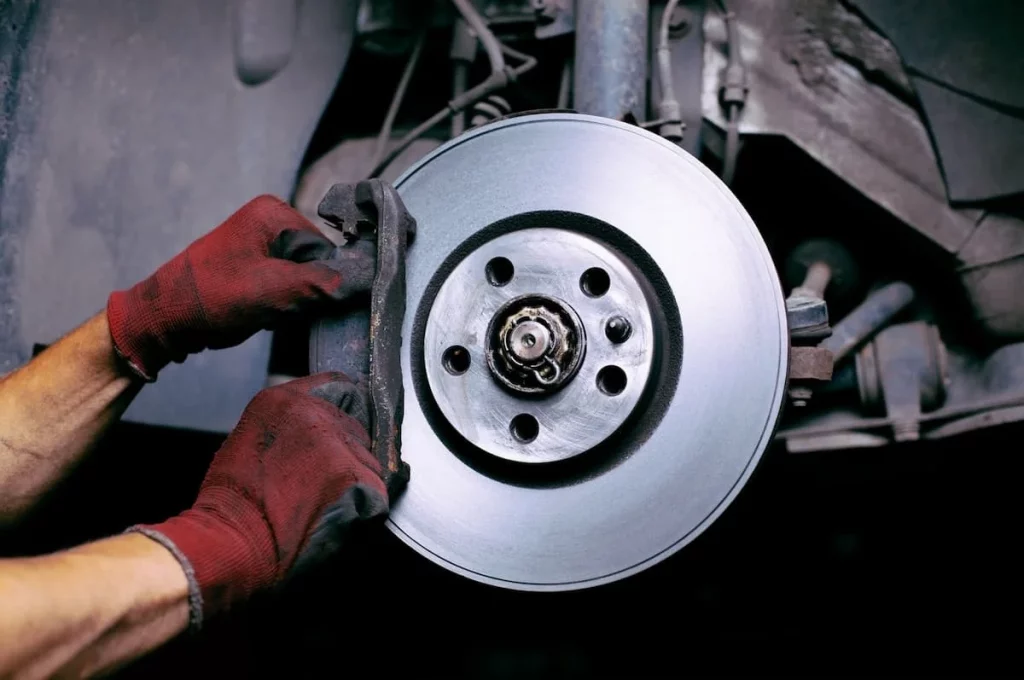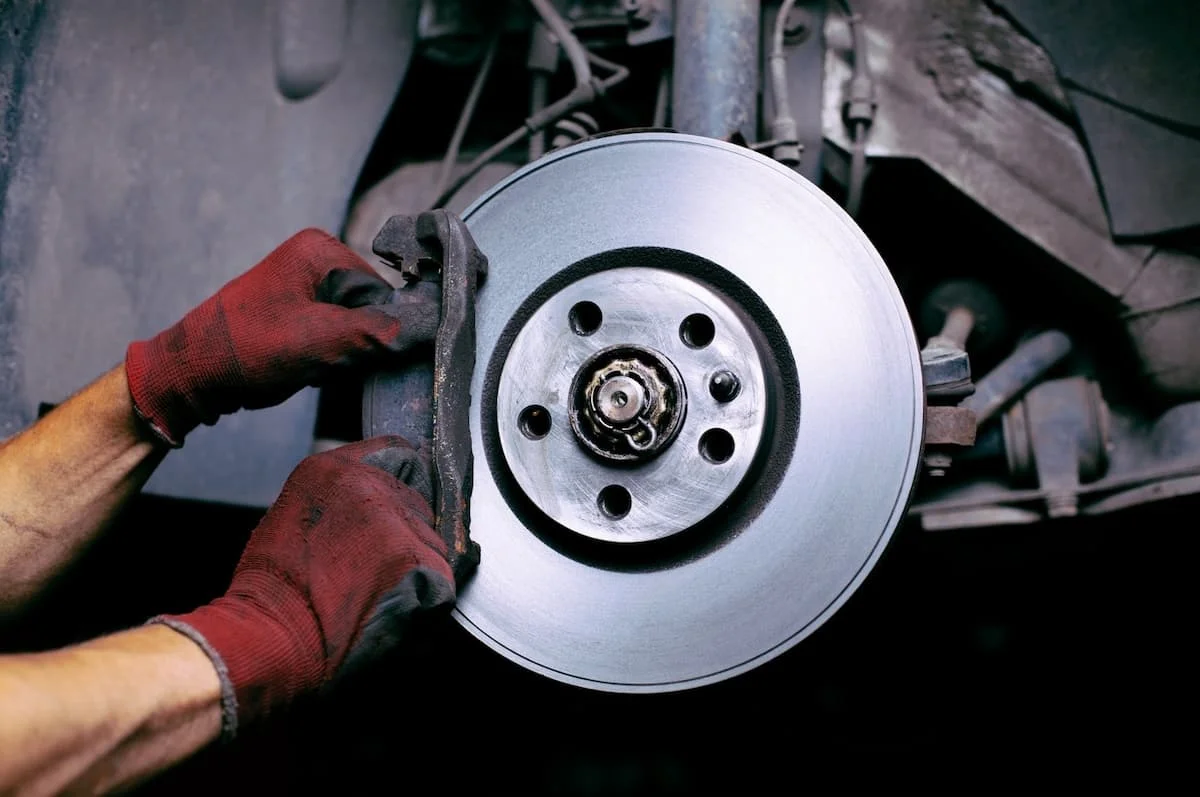
When it comes to vehicle safety, few components are as crucial as the brakes. Car brake pads play a vital role in ensuring that your vehicle can come to a stop safely and efficiently.
However, over time, these essential components can wear down, leading to reduced braking performance and potential safety risks.
In this blog, we will discuss the causes of car brake pad damage, when you should replace brake pads, and how long brake pads typically last.
So, let’s dive in and explore the world of brake pad maintenance.
Causes of Car Brake Pad Damage
Understanding what can cause damage to your car’s brake pads is the first step in preventing premature wear and tear. Here are some common culprits:
- Normal Wear and Tear: Brake pads are designed to wear down gradually with use. Friction against the brake rotors causes them to erode over time.
- Aggressive Driving: Frequent hard braking and aggressive driving can accelerate brake pad wear. If you have a habit of slamming on the brakes, expect your pads to wear out faster.
- High Temperatures: Excessive heat generated during braking can lead to brake pad glazing, reducing their effectiveness. This is often a result of prolonged braking on steep hills or heavy traffic.
- Contaminants: Dust, dirt, and debris can accumulate on the brake pads, affecting their performance. Additionally, exposure to moisture can lead to corrosion.
- Low-Quality Brake Pads: Using low-quality or poorly manufactured brake pads can lead to premature wear and reduced braking efficiency.
When Should You Replace Brake Pads?
Knowing when to replace your car’s brake pads is crucial for maintaining safety on the road. Here are some signs that it’s time to consider a brake pad replacement:
- Squeaking or Squealing: If you hear high-pitched squeaks or squeals when you apply the brakes, it’s a clear indication that your brake pads are worn and in need of replacement.
- Reduced Braking Performance: If your vehicle takes longer to come to a stop or you notice a reduced braking response, it’s a red flag that your brake pads are in poor condition.
- Vibration or Pulsation: When you feel vibrations or pulsations in the brake pedal, it may be a sign of warped brake rotors due to worn brake pads.
- Warning Light: Many modern vehicles have a dashboard warning light that signals when the brake pads are worn. Take it seriously if you see this warning.
- Thin Brake Pad Material: You can visually inspect your brake pads through the wheel spokes. If the pad material is less than a quarter of an inch thick, it’s time to replace them.
Brake Pad Replacement Cost
Now that we’ve covered the causes of brake pad damage and when you should replace them, let’s delve into the brake pad replacement cost. Understanding the potential expenses involved in maintaining your vehicle’s braking system is essential for budgeting and making informed decisions.
The cost of replacing brake pads can vary widely based on several factors:
- Vehicle Make and Model: Different vehicles have varying brake systems, and the cost of replacement parts can differ significantly. Luxury or high-performance vehicles may have more expensive brake pads.
- Brake Pad Material: The type of brake pads you choose plays a significant role in the overall cost. Ceramic and semi-metallic pads are often more expensive than organic ones due to their superior performance and durability.
- Labor Costs: Labor charges can vary depending on your location and the auto repair shop you choose. It’s a good practice to obtain quotes from multiple mechanics to find the best deal.
- Front or Rear Brake Pads: Replacing front and rear brake pads may have different costs. Typically, front brake pads wear out faster, so they might require more frequent replacement.
- DIY vs. Professional Installation: If you’re skilled in automotive repair, you can save on labor costs by replacing the brake pads yourself. However, it’s important to have the necessary tools and knowledge to ensure a safe installation.
On average, the cost of replacing brake pads can range from $100 to $300 per axle, including both parts and labor. This estimate can vary based on the factors mentioned above.
How Long Do Brake Pads Last?
The lifespan of brake pads can vary depending on several factors, including driving habits, vehicle type, and the quality of the brake pads. However, on average, most brake pads last between 30,000 to 70,000 miles. Here are some considerations:
- Driving Conditions: If you frequently drive in stop-and-go city traffic, your brake pads may wear out faster than someone who primarily drives on the highway.
- Brake Pad Material: High-quality ceramic or semi-metallic brake pads tend to last longer than organic pads. Invest in better quality brake pads for extended lifespan.
- Driving Habits: Gentle braking and avoiding aggressive driving can significantly increase the life of your brake pads.
- Vehicle Weight: Heavier vehicles may wear out brake pads more quickly due to the increased demand on the braking system.
Regular maintenance of your car’s brake pads is essential for your safety and the longevity of your vehicle.
By being attentive to the warning signs of worn brake pads and adopting good driving practices, you can extend the life of your brake pads and minimize the eventual cost of replacement.
When the time comes for a brake pad replacement, it’s crucial to invest in quality brake pads to ensure your vehicle’s safety and performance.
Remember that your brakes are your first line of defense on the road, and keeping them in top condition is an investment in your safety and the well-being of your vehicle.
